Longues Battery
Situated between Omaha Beach and Gold Beach, and built in the spring of
1944, Longues Battery was positioned to disrupt landings on either with
its four 152mm guns. While the Overlord Plan had Pointe du
Hoc assaulted by Rangers, Longues Battery would be silenced
by bombardment. In the early morning of June 6th, one
thousand tons of bombs were dropped on the battery, but the battery
opened fire at H minus 30 minutes. A duel with Allied warships
ensued throughout the day. The battery went silent, then
bombarded both American and British beaches in the afternoon.
That evening, the naval bombardment continued. eventually,
naval bombardment destroyed three of the four guns, and the
battery, by then abandoned by its Kriegmarine crew, was taken by
British troops on June 7th.
Today, the battery is one of the few remaining batteries with its guns, and is worth a visit.

Omaha Beach is visible from here to the west beyond Port en Bessin.

To the east beyond Arromanches, where the Mulberry Harbor was built, is Gold Beach.
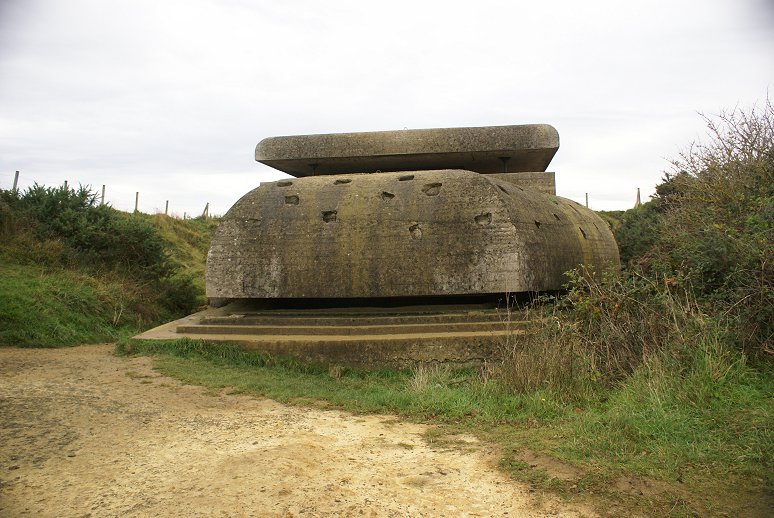
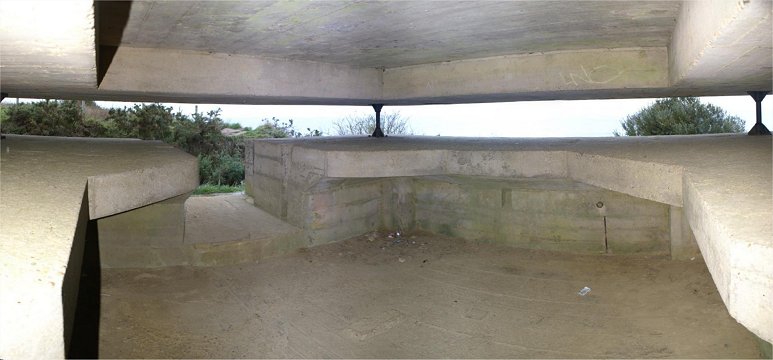

Range Finding Post
On the edge of the cliff, three hundred yards in front of the guns,
was the range finding post, equiped with optical rangefinding
equipment. (The section on the Grand Bunker shows such equipment.) The four guns were directed from the rangefinding post.
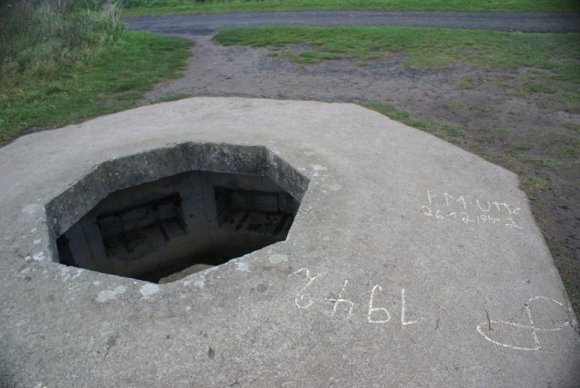
Machine gun positions protected the battery.
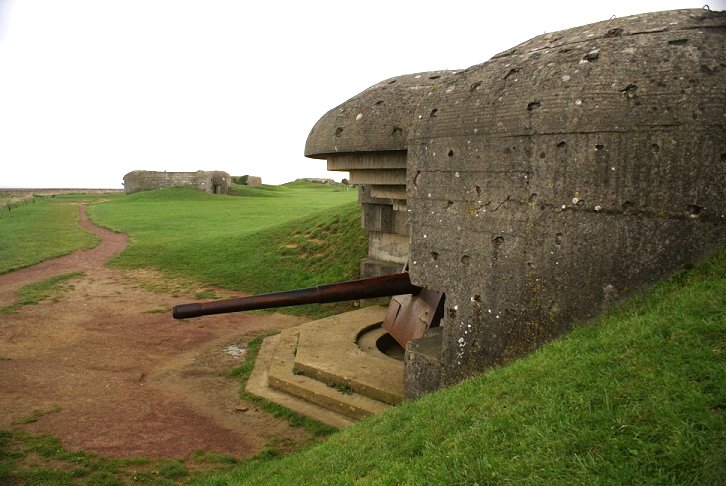
The casemates were each built with 600 cubic meters of concrete and
four tons of steel reinforcement. The underground concrete foundation
extended laterally so the casemate would stay in place despite an
explosion from a near miss bomb. Dirt piled up on top of his foundation and against the sides helped with this and gave
additional protection as well as helping conceal the position.
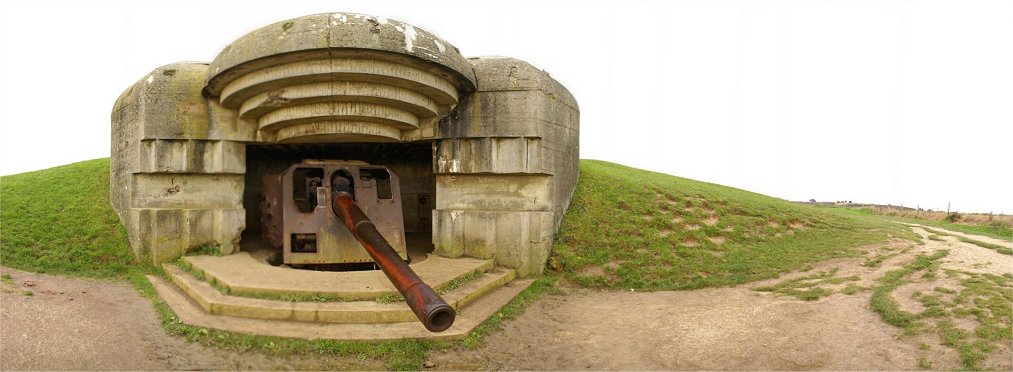
The step like concrete features were used instead a smooth surface to prevent an enemy shot from ricocheting into the casemate.
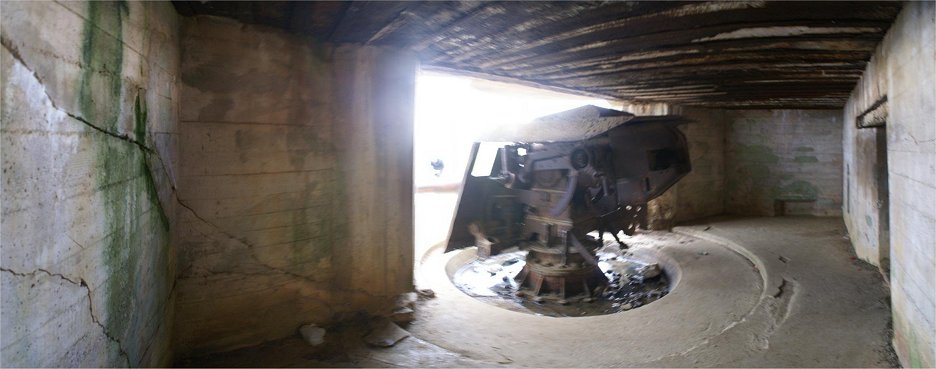
This is the interior of a casemate. The opening behind the gun
extends to exits at the rear of the casemate with rooms on either side
for ammunition. See below.
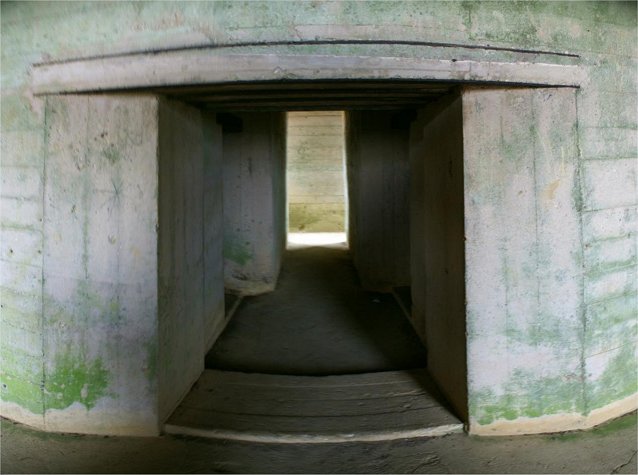
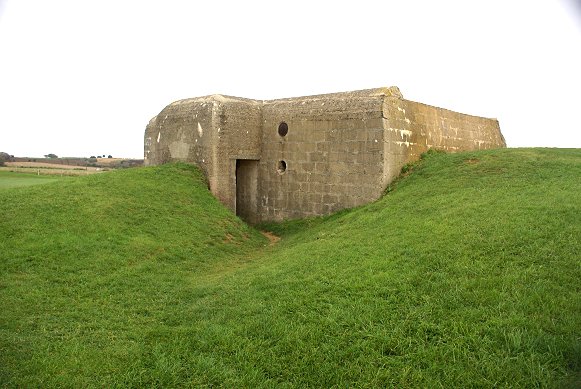
This is the rear of the casemate, seen from one side. One of the
two exits is visible with the other exit straight across from this one.
This design kept enemy projectiles from entering.

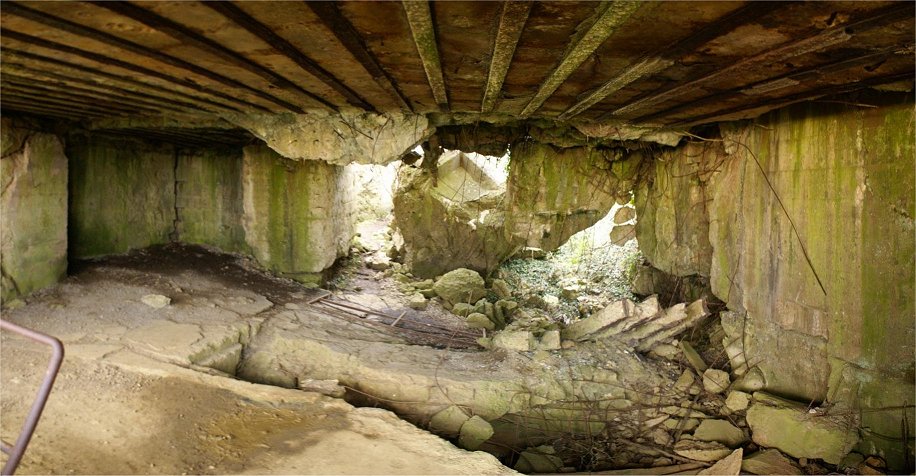
Battle Damage
The steel reinforcement makes the concrete considerably stronger than without.
Copyright 2010, John Hamill












